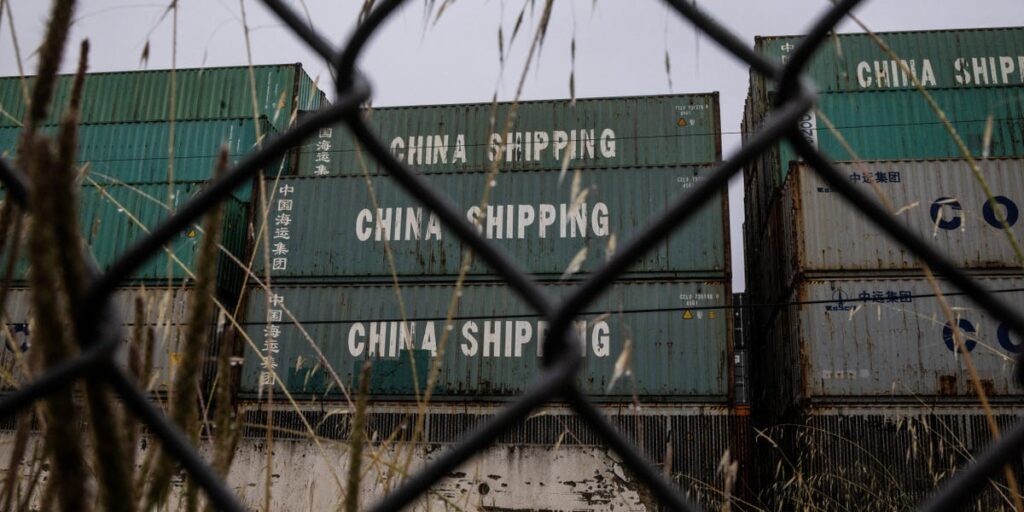Chinese exports to the US are expected to plummet without a trade deal.
A new tariff scenario simulator by the Observatory of Economic Complexity shows Chinese exports to the US could decrease by $488 billion from now till 2027, if the two countries cannot come to an agreement and the higher tariffs on China proposed in April come to pass.
For US consumers, the sectors most affected will be computers, electrical equipment, toys, and clothing, according to the simulator.
The OEC simulator forecasts for China are based on what it calls the “Liberation Day scenario,” which refers to a 34% tariff imposed on China on April 2, on top of duties already pre-existing before the second Trump administration.
But these goods won’t simply remain in China. In place of the US, the simulator predicts that Chinese exports to Southeast Asia will see a major spike, followed by smaller gains across Europe, for EU members like Italy, France, and the Netherlands.
According to the simulator, Vietnam and India could each receive around $38 billion and $40 billion more worth of Chinese products in two years, while Russia could potentially import $33.1 billion more from its neighbour.
The predicted figures come as delegations from both countries race to negotiate a truce before high tariffs exceeding 100% on Chinese goods return on August 12. Teams led by Treasury Secretary Scott Bessent and Chinese Vice Premier He Lifeng convened in Stockholm on Monday, marking their third meeting in three months.
The delegations previously met twice in Geneva and London in May and June and agreed on a trade framework.
Ahead of the meeting, US Trade Representative Jamieson Greer said in a Monday interview with MSNBC that being able to meet with China’s negotiators regularly gives the US “a good footing for these negotiations.”
Last week, in an interview with Fox News, Bessent said there will “likely” be an extension to the current tariff pause and that “trade is in a very good place with China.”
On April 2, the Trump administration first imposed a 34% tariff on China, then escalated the duties to as high as 245% after a few weeks of back-and-forth retaliations with China. The duties were later suspended for 90 days on May 12 to help ease trade negotiations, but the baseline 10% tariff remains.
The White House and the Treasury did not immediately respond to requests for comments.
Read the full article here
















